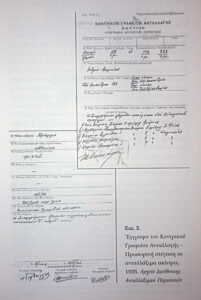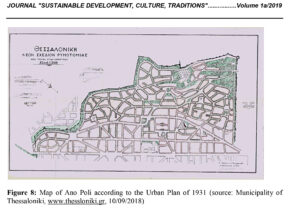Exchangeable property
City
Migration Period
City Narratives
Category
Full Description
This Muslim Property Registration Document from the Central Exchange Office reports that the land plot at 125 Kassandrou Street, which has 108 square metres of built-up area and 114 square metres of open area, is granted to 5 refugee families amounting to 25 members in total: one three-member family, three five-member families and one seven-member family.
According to Hastaoglou, ‘The Great Fire of 1917 had left 72,000 people homeless and the arrival of the refugees added another 77,000, raising the total number of people in an emergency situation to 150,000 in just five years. The remaining 40,000 refugees were temporarily housed by the General Governorate of Macedonia in abandoned Muslim houses in exchange for a low rent. It is estimated that 11,179 families were living in the city centre in 4,027 exchangeable properties, which amounted to 11,987 rooms, with one family per room. A small number of refugees, the most affluent ones, took advantage of the booming housing market on the city’s burned zone which was in the process of being redeveloped. By 1927, following the departure of the last Muslims in 1924 and the mass sale of exchangeable properties by the National Bank of Greece after 1925, more than 700 property deeds on the city’s burned zone and 5,019 plots and properties across Thessaloniki had changed hands’.
Bibliography
Vilma Hastaoglou, ‘Refugee settlement. Social and spatial transformations’, in E. Ioannidou (ed.), The transformation of Thessaloniki. The settlement of the refugees in the city (1920-1940), Epikentro, Thessaloniki 2010, pp. 43-88.


